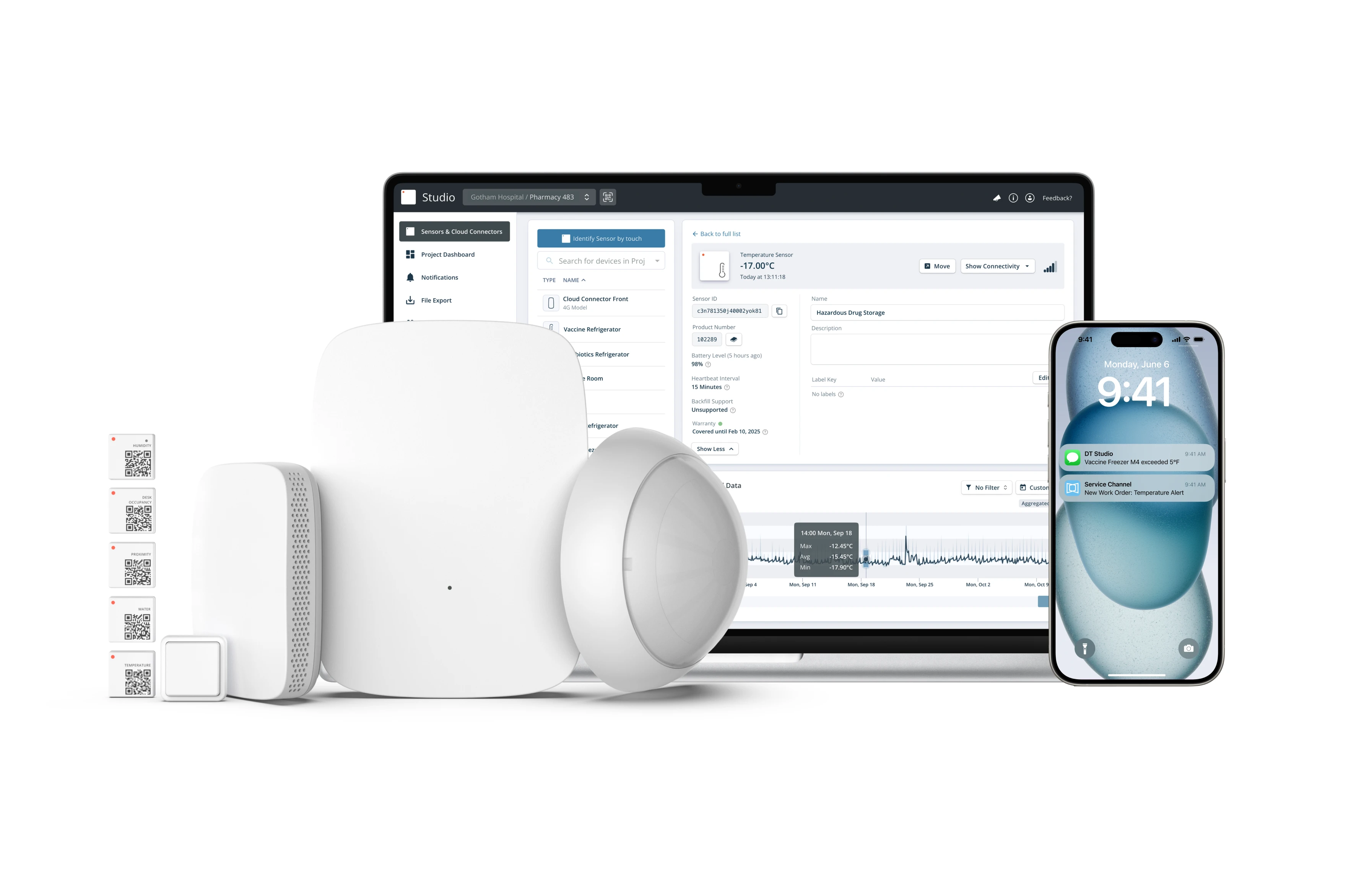Introducing the CO2 and Motion Sensors

Today we are excited to introduce two new wireless sensor types! A Wireless CO2 Sensor for indoor air quality monitoring and the Wireless Motion Ceiling Sensor for room occupancy detection.
At DT, our mission is to make it as easy as possible for anyone to collect data from the real world, and we are always striving to add new useful data points to our platform. For the last three years, we have been helping our customers collect data from buildings to transform how they operate.
With the introduction of CO2 monitoring and occupancy detection, we are making more actionable data easily available on the same platform.
Background
Monitoring indoor climate and occupancy levels based on door activity in office buildings are among the most popular use cases of DT sensors. Since launch, the most requested sensor types to improve and expand these use cases have been CO2 and motion sensors. Innovative partners like Mesa by Sidewalk Labs use occupancy data, combined with DT sensors and machine learning, to automatically preheat or pre-cool spaces to reduce power consumption in buildings while improving the workspace for tenants. And increasingly, research shows the positive health and productivity benefits of controlling indoor CO2 levels in office environments. Some studies even show that working in an office with optimized CO2 levels can increase productivity by 60%.
Through the pandemic, we have experienced an accelerated adoption of IoT sensors that helps facilities managers and building owners change how their buildings operate in response to new usage patterns. Our partners have turned around quickly to create new solutions that help make sense of IoT sensor data to ensure safe and comfortable work environments while people are using the buildings - while minimizing energy consumption when the building is not used. CO2 sensors can be used to ensure adequate ventilation to help reduce the spread of the SARS-CoV-2 virus and motion sensors can be used to understand where and when a building is used. Some countries have even started funding the adoption of CO2 monitoring in schools to make sure classrooms are correctly ventilated. With the release of two new sensors, we are committed to further helping our customers in their missions to provide safe, smart, and sustainable buildings.
Different Form Factor, Same User Experience
For the first time, we are introducing new sensor form factors to our sensor lineup, carefully designed with the product values that our customers have come to know and love.
The CO2 and motion sensors will work with the existing Cloud Connector infrastructure and benefit from the same simplicity, reliability, and robustness as the rest of our sensor suite, reducing the overall cost and time-to-market for partners delivering smart building solutions.
Introducing the Wireless CO2 Sensor

The Wireless CO2 Sensor measures CO2 (ppm), temperature (°C/°F), relative humidity (%), and barometric pressure (Pa). It is designed to blend into a typical office environment and can easily be installed by removing the adhesive liner on the backside of the sensor and sticking it to a wall. The sensor features an ultra-low-power non-dispersive infrared sensor technology that lets us achieve up to 10 years of battery life using only two user-replaceable AA batteries. With the new form factor, we have significantly increased the wireless range between the sensor and the Cloud Connector, reducing the number of gateways needed to monitor a building.
Features include:
- 4-in-1 measurements (CO2, Temperature, Relative Humidity & Barometric Pressure)
- Long wireless range 100 m (330 ft) in a typical indoor environment, 2 km (6600 ft) line-of-sight
- 10-year battery life
- Accurate CO2 measurements (0 - 5000 ppm ± 45 ppm)
- Peel-and-stick mount for simple installation
Introducing the Wireless Motion Sensor

The Wireless Motion Sensor uses Quad-element Passive Infrared Sensor (PIR) technology to detect the presence of people in a room by measuring changes in infrared light intensity coming from a warm body moving into the sensor's field-of-view. While most commonly used in automatic lighting or alarm systems, motion sensors can also collect occupancy data from buildings. Primarily intended for monitoring occupancy in rooms and larger areas, the sensor is mounted in the ceiling and has a detection range of up to 14 meters (46 ft) with a 360° field of view.
Powered by two replaceable AA batteries, the sensor can achieve a battery life of up to 10 years, depending on the activity level.
Features include:
- 360° detection pattern
- Up to 10-years of battery life
- Long wireless range (100m (330ft) indoors, 2 km (6600ft) line-of-sight)
- Simple installation
Extended Studio Support
In addition to standard API and Studio support, the new sensors will launch with a new Heatmap card feature in Studio Dashboard that allows users to easily visualize when CO2, temperature, humidity, or occupancy levels are high or low throughout the day, week, or month.

Availability
The Wireless CO2 Sensor and the Wireless Motion Sensor are available for order today and will start shipping at the end of April. We can’t wait to get them into the hands of our customers! If you are interested, please contact our Sales team.
.webp)
Ensure Healthy Indoor Spaces By Monitoring CO2 Levels
Get Started



.png)
.png)

